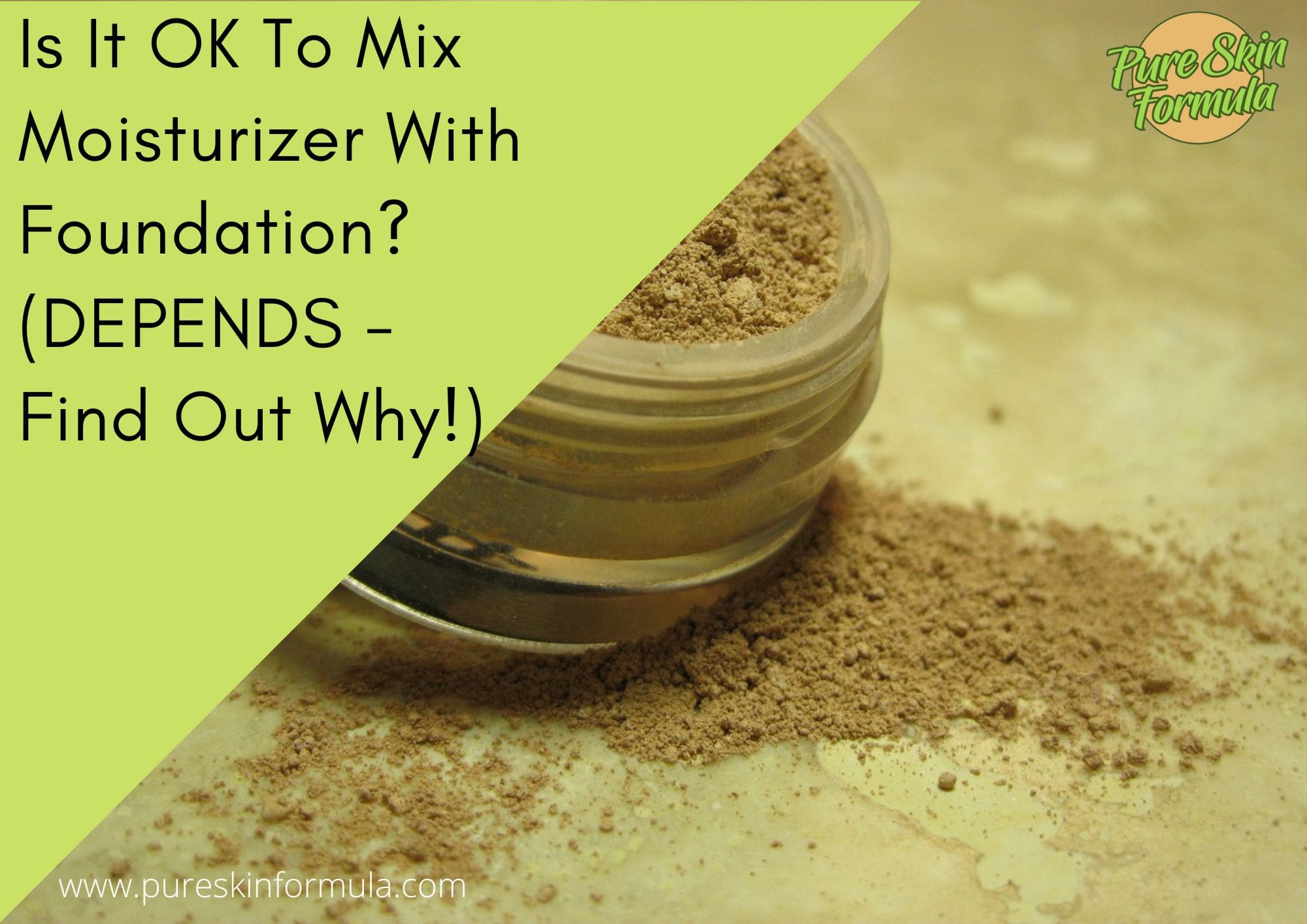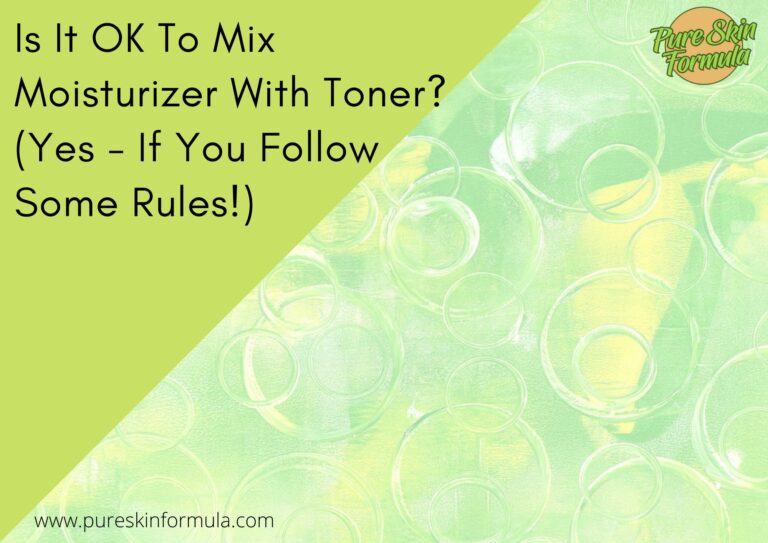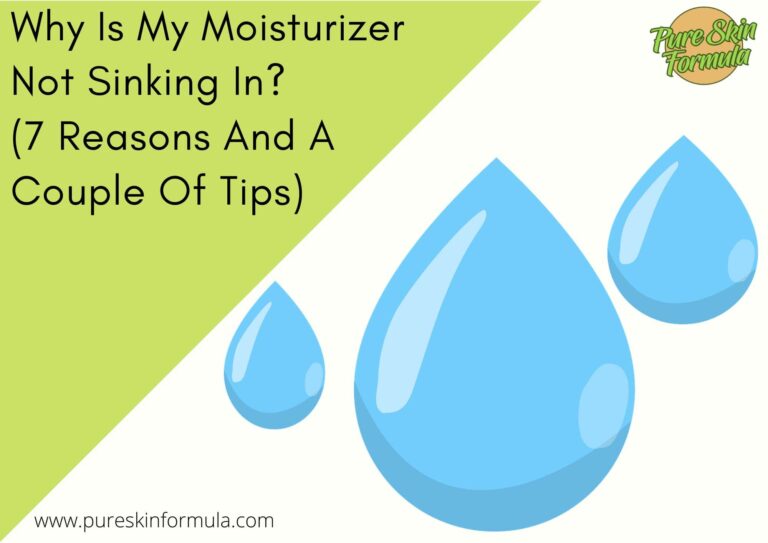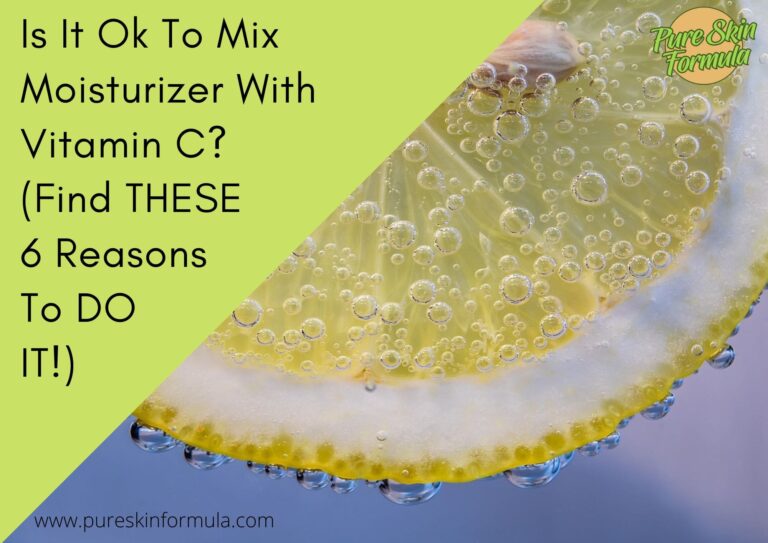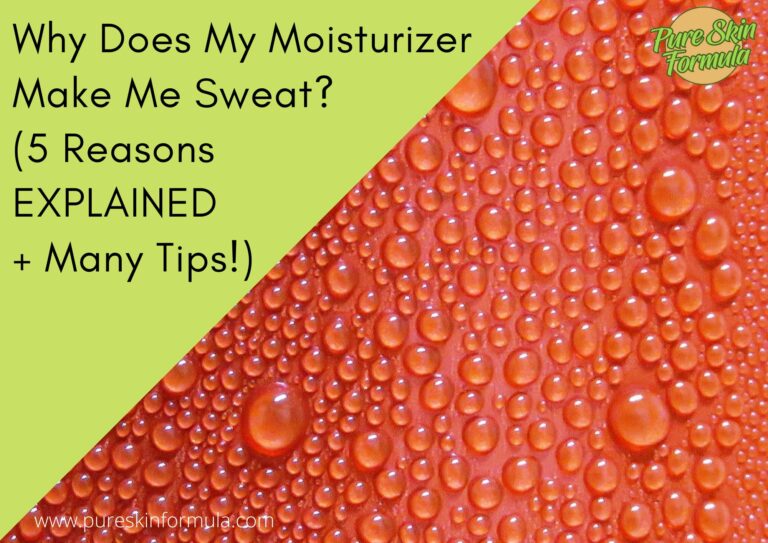Moisturizers and foundations may vary in their purpose, texture and ingredients used.
For example, there are moisturizing, brightening, pore minimizing, blemish and fine line concealing, mattifying and other types of foundations.
There are moisturizers for oily, dry or combination skin.
A bit complicated? Yes, it is not straightforward to explain whether it is good to mix moisturizer with foundation. This is the short answer:
Is it OK to mix moisturizer with foundation?
Yes, if both products fit, and no if they don’t match well. As a rule of thumb, water mixes with water; oil combines with oil and silicone mixes with silicone.
If both products are the same kind, then you can blend them. If they differ – the result won’t be that efficient.
For example, silicones and oils don’t mix with water; they sometimes combine with oils.
You should test the two products to see the result – if it is okay, proceed!
Please find the details below.
Foundation and skin type
Hydrating foundation is for you if you have dehydrated and easily flaking dry skin.
Hydrating foundations may contain hyaluronic acid, vitamins A and B3, and other ingredients, like jojoba or almond oil, that help hydrate and nourish the skin.
The texture of moisturizing foundations is creamy and very light. When applied to the skin, they have a moisturizing and nourishing effect and a brightening effect on the face.
Mattifying foundations are designed for people with oily skin who can’t handle the extra shine from an oily face.
Mattifying products are oil-free and are designed to reduce oil production and release and prevent unpleasant shine and oiliness after you apply your makeup.
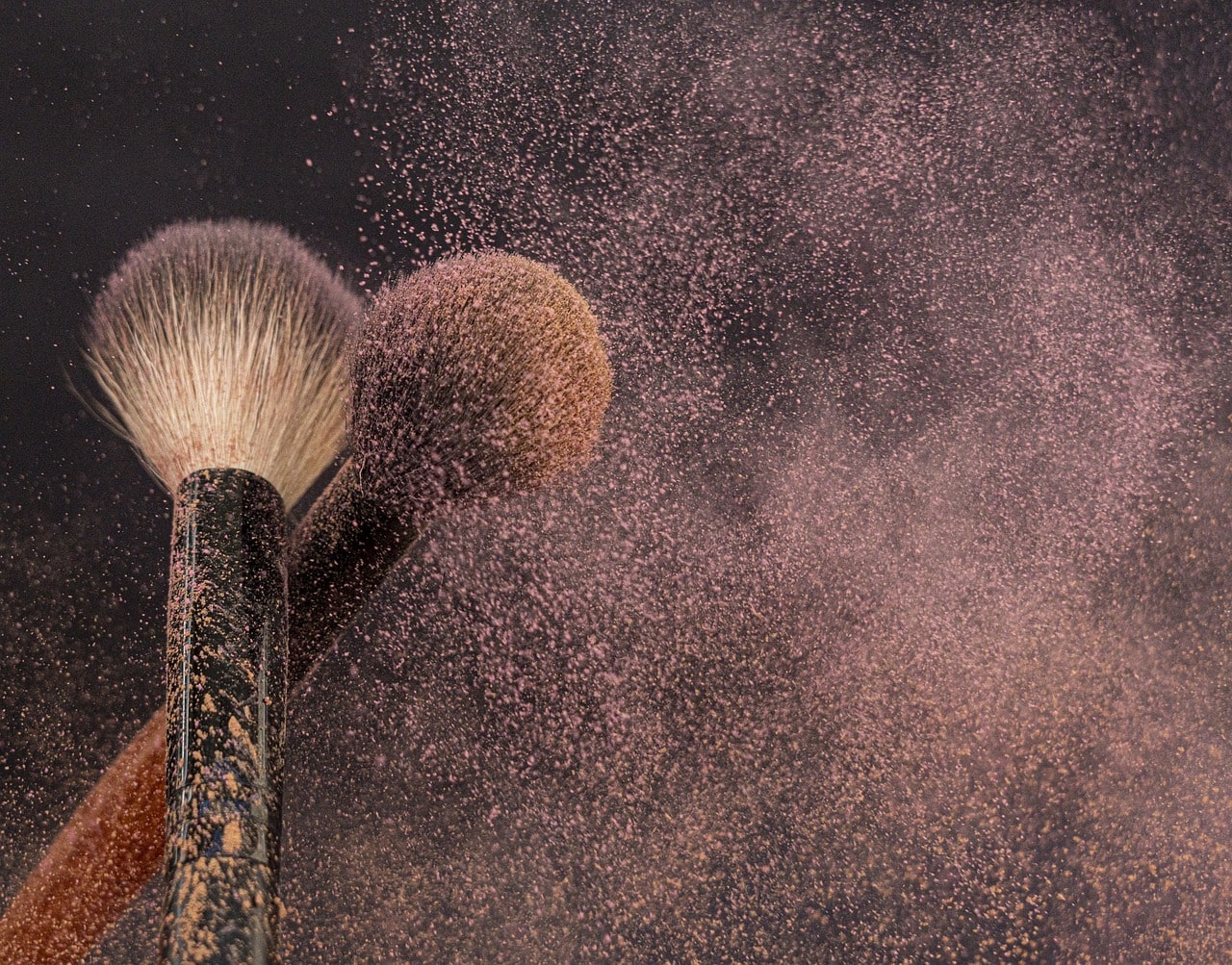
If you have oily skin and suffer from large pores or acne, you can use a pore-minimizing product or a such with salicylic acid (for acne) instead of a mattifying foundation.
You can use two different foundation types for combination skin if you want something more individual.
Use hydrating and brightening products for dry areas, and for oily areas, use mattifying foundations.
Foundation and texture
There are silicone foundations that even out the skin and complexion.
You can find silicone on the label as methicone, phenyl trimethicone, dimethicone, dimethiconol, and cyclomethicone.
They have a “freezing” effect, and you can rest assured that your makeup will not “move”, whether it is hot or cold outside.
Their disadvantage is that they are not skin-friendly, and if you have problem areas on your face, you better avoid them because they clog the pores.
Creamy makeup foundations are light in texture. Their function is to moisturize and hydrate the skin heavily. They soften the skin and prepare it for makeup application.
Lotions are best suited for oily skin. They absorb quickly and even out the complexion. They cover imperfections and mattify the skin.
How to properly apply the foundation
Explore the main types of foundations, read the product descriptions carefully and choose a product that matches your skin type.
Wash your face with a gentle cleanser – it is essential to clean your face very well before you start applying foundation.
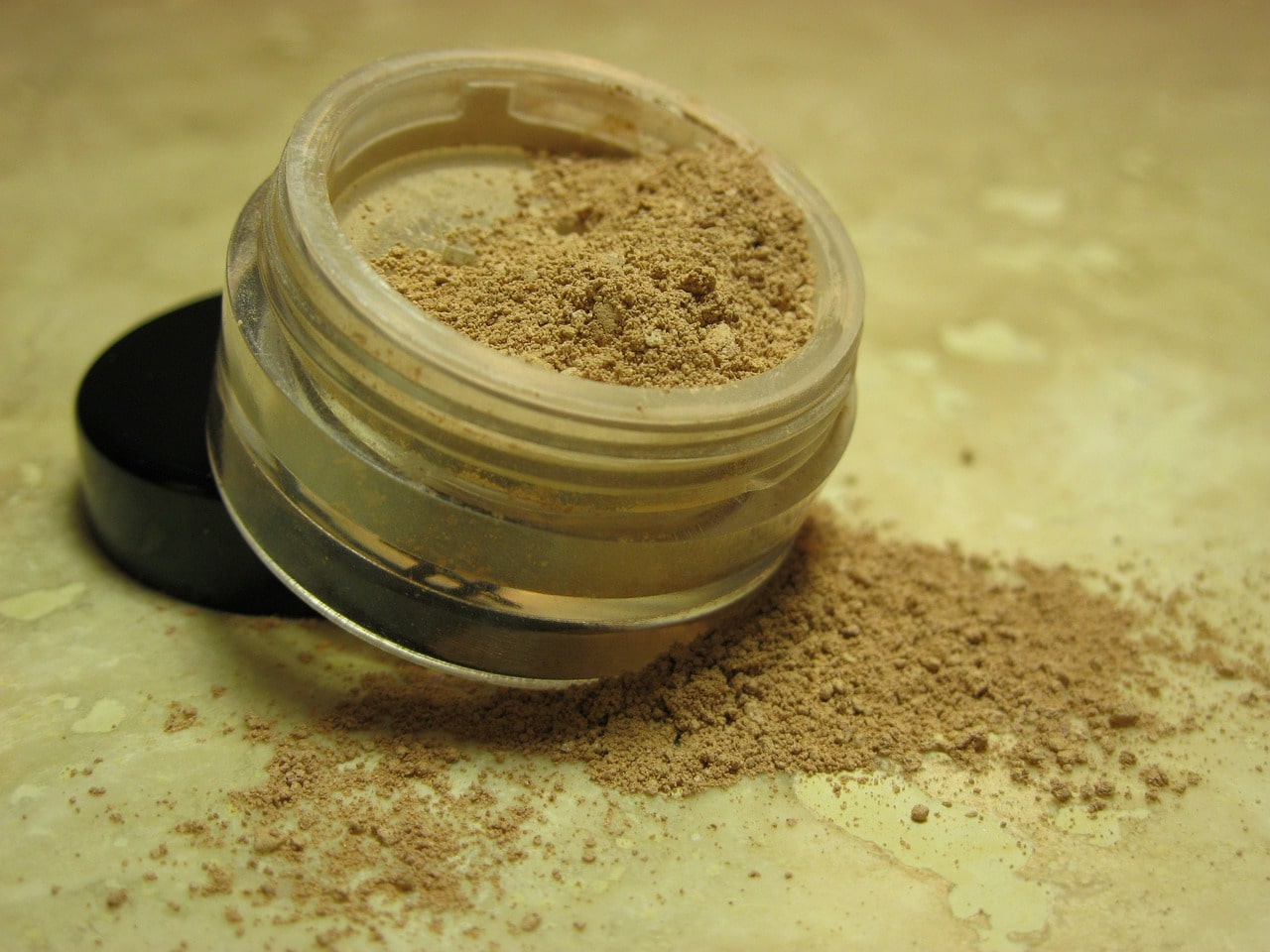
Apply moisturiser to your face and leave it for a few minutes to soak in thoroughly.
The foundation is not a substitute for moisturizer, as the moisturiser’s job is to nourish your skin and hydrate it as much as needed.
Open the product and put a very small amount on your hand (usually, a foundation the size of a pea is enough to cover your entire face).
Start applying the foundation directly with your fingers or a soft brush from the centre of the face. Spread the product gently and in an even motion all over the face.
Ensure you apply the foundation evenly and all over the face and let it dry completely before applying the rest of your products.
How do moisturizer and foundation relate?
Water-based moisturizer fits well with a hydrating foundation. They are best for oily skin, are very gentle, and will not clog the pores.
The consistency of the oil-based foundation is thick. It fits with an oil-based moisturizer.
Oil-based products need more time to penetrate the skin than water-based products, so they sit on your skin for extended periods.
This makes these products feel heavy and greasy on the skin.
As mentioned, If you have dry skin, using an oil-based foundation is your way of getting that healthy and glowing skin because it will prevent it from looking dry and dehydrated.
The silicone-based foundation is waterproof.

It forms a fine layer on your skin and thus will prevent moisture loss from your skin. It fits with a silicone-based moisturizer and, under certain circumstances, will fit with oil-based cream.
What if both products don’t mix well?
Start with the moisturizer!
Applying cream is a good idea if the foundation you use doesn’t have a moisturizing or sun protection effect.
After applying the cream, wait a few minutes to absorb and lay the foundation.
To sum it up
MIxing moisturizer with foundation is possible and is okay to do. Combining them can save time or give you a different and exciting look.
But it is not always possible. It is not OK if you blend products that don’t match. The result will be a substance you don’t want on your skin.
There are some rules you could follow to avoid the ugly picture.
But above all, if you feel any doubts, you can always do one thing – experiment with the products and the quantities until you find the best blend that suits you.
Thank you for reading!
Valeria

